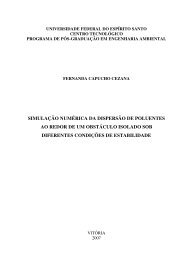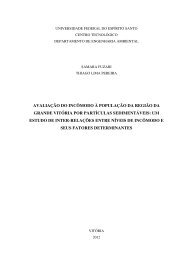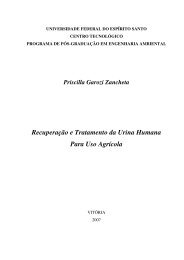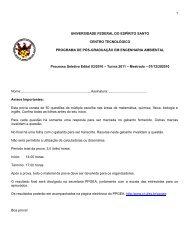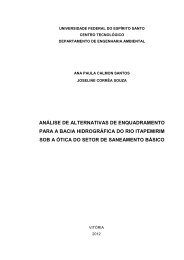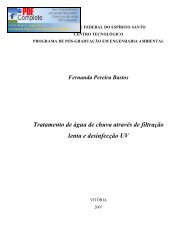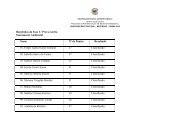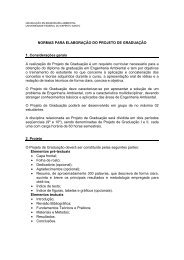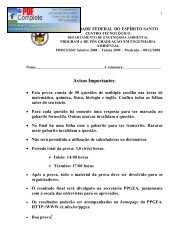DIMENSIONAMENTO OTIMIZADO DE REDES PREDIAIS DE ÃGUA ...
DIMENSIONAMENTO OTIMIZADO DE REDES PREDIAIS DE ÃGUA ...
DIMENSIONAMENTO OTIMIZADO DE REDES PREDIAIS DE ÃGUA ...
You also want an ePaper? Increase the reach of your titles
YUMPU automatically turns print PDFs into web optimized ePapers that Google loves.
vi<br />
ABSTRACT<br />
The main objective of this work is to allow designers to use EPANET on building<br />
pipe sizing following the Brazilian standards method. EPANET was originally<br />
built for urban drink water networks and might be used for building cold water<br />
networks as well. This software uses some data informed by the user such as<br />
demands at the nodes, pipes diameter and length. Nevertheless, urban<br />
networks have some differences in matter of water uses. The water<br />
consumption in buildings is intermittent, that is, the pipes shouldn't be sized<br />
considering only the characteristic demands of the devices, since it might cause<br />
pipes over sizing. The Brazilian standards methodology consider the devices<br />
demands as weights that are, in fact, probabilities of simultaneous water uses<br />
which are converted in water flows by an empirical formula. In despite of using<br />
different concepts for flows calculations, EPANET is a worldwide used software,<br />
and it has an open source code, which allows users to modify its code if<br />
needed. This is the motivation of using it on this study. In this work it was<br />
developed a methodology that creates fictitious demands for the nodes which,<br />
when summed, coincide with the real flow calculated by the method stablished<br />
by the brazilian standards. It was used an optimal sizing model developed in the<br />
Universidade Federal da Paraíba (UFPB) called LENHSNET and the traditional<br />
method for the net sizing (trial an error).



